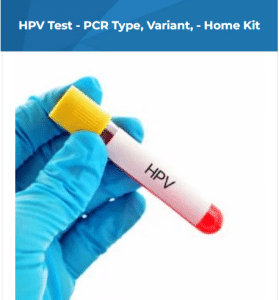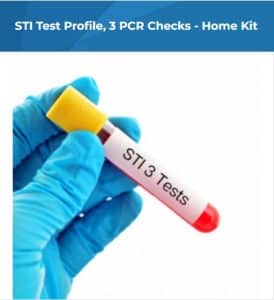Sexually transmitted diseases have been a common public health concern throughout history. Over the years, significant developments have been made in the field of STD Home testing, which is revolutionizing the way we diagnose and manage these infections. One of those exams is the HPV PCR Exam, which emerged as a powerful tool in finding cervical cancer, a significant global health concern.
This article will explore the differences between monitoring diseases that transfer through sexual activity in the past and the present. We’ll also spot the developments in accuracy, accessibility, and comfort.
STD PCR Testing Methods:
In the past, this monitoring primarily relied on medical symptoms and physical examinations. Medical workers and doctors would check patients for visible signs of infection, such as genital sores, rashes, or other problems. However, relying solely on symptoms often leads to misdiagnosed or confused cases. This is because many STDs like HIV can stay in your body without showing symptoms or present with non-specific symptoms.
Today, the monitoring of sexual infections has significantly evolved thanks to the development and growth of medical technology. Various monitoring methods are available, including nucleic acid amplification exams (NAATs), polymerase chain reaction (PCR), and immunoassays. These exams can detect the presence of infections correctly. Moreover, they don’t even need symptoms, ensuring a more broad assessment of the sexual health status of an individual.
Accuracy and Sensitivity:
In the past, the accuracy and sensitivity of these STD Exams could have been improved. Traditional methods, such as microscopic examinations or culturing, had lower sensitivity rates and were prone to wrong results. This meant that some infections could go undetected, leading to delayed treatment and increased risk of transmission.
Modern monitoring methods have significantly aided the accuracy and sensitivity of these exams. NAATs and PCR techniques have high sensitivity, enabling the finding of even small amounts of pathogens in samples. This technique ensures more accurate diagnoses and reduces the chances of false results, allowing for timely treatment and effective disease control.
Accessibility and Privacy:
Previously, these exams involved visiting a doctor, medical worker, or clinic. This created barriers, including stigma, limited medical system access, and privacy concerns. Many individuals were shy to seek this monitoring due to these challenges. This condition can cause late diagnosis, resulting in more severe conditions like cancer, possibly leading to death.
Present-day exams of these diseases have become more easily present and private. Home monitoring kits are now available, allowing individuals to take their samples in the comfort and privacy of their homes. These samples can then be sent to labs for analysis, providing comfort and anonymity. Home monitoring kits have proven particularly valuable in reaching vulnerable populations and reducing barriers to monitoring.
Turnaround Time and Rapid Monitoring:
In the past, the turnaround time for STD Profile Exams and the results was often lengthy. Samples must be sent to a lab, processed, and reported to the medical worker, doctor, and patient. This delayed start of treatment can lead to the further spread of infections.
Today, rapid monitoring options have come out as game-changers in STD diagnosis. Point-of-care and rapid diagnostic exams (RDTs) provide quick results within minutes. It allows immediate results and helps in getting timely treatment. Rapid monitoring also facilitates quick partner notification and contact tracing, which is crucial for preventing other spread of STDs.
The Role of HPV Variant Kits in Cervical Cancer:
Understanding Human Papillomavirus and its Link to Cervical Cancer:
Human Papillomavirus is a common STI that can lead to cervical cancer if left untreated. Certain strains of this virus, hazardous types such as HPV 16 and 18, are strongly associated with developing this cancer. These strains can cause persistent infections that, over time, can lead to abnormal cell changes in the cervix and eventually progress to cancer. By targeting this infection, we can effectively prevent the development of cervical cancer.

Role of HPV Testing
The Accuracy and Benefits of HPV Screening:
High Accuracy in Detecting High-Risk Human Papillomavirus Infections:
It is correct to find the presence of human papillomavirus strains most likely to cause cervical cancer. This exam can identify the DNA of the virus in cells taken from the cervix. By finding the presence of these risky strains, medical workers can determine the risk of cervix cancer in a woman.
Improved Sensitivity in Early Detection:
Compared to traditional Pap smear exams, human papillomavirus check-ups offer improved sensitivity in detecting cervical abnormalities and finding dangerous HPV infections. Pap smears examine the cells of the cervix for abnormal changes. On the other hand, human papillomavirus monitoring directly targets the virus itself. This early finding allows for timely interventions, such as other medical processes or monitoring, preventing the development of abnormal cells in cervical cancer.
Impact on Women’s Health:
Enhanced Risk Stratification:
This monitoring helps medical workers stratify women into risky types based on their infection status. Women who come negative for this risky infection can have high confidence in their low risk of developing cervical cancer, allowing longer monitoring intervals. On the other hand, women who come positive for human papillomavirus can receive closer monitoring, more regular monitoring, and appropriate interventions to prevent the development of cervical cancer.
HPV Exam Reduces the Need for Unnecessary Procedures:
This exam can possibly reduce the number of procedures and treatments which are not necessary compared to traditional monitoring methods alone. By picking out dangerous HPV infections rightly, medical workers can target interventions specifically for women at more risk, lowering treatments and procedures that are not necessary for women. This improves the overall medical experience for women, reducing anxiety and the potential for adverse effects.
Conclusion:
The landscape of STD Home testing has gone through significant changes over time. The development and growth made in monitoring methods, accuracy, accessibility, and changing times have aided the overall benefit of STD Test diagnosis and management. With more correct and comfortable monitoring options, individuals can receive timely treatment, preventing serious problems and reducing the spread of STDs within the population. As we continue to grow and expand access to STD monitoring, we move closer to controlling and eradicating these infections.
Similarly, HPV Home testing is highly correct and effective for preventing cervical cancer. It allows for an early finding of infections and identifies women at higher risk of developing this cancer. It is crucial to make vaccination plans and solid efforts to stop the cancer of the cervix.










